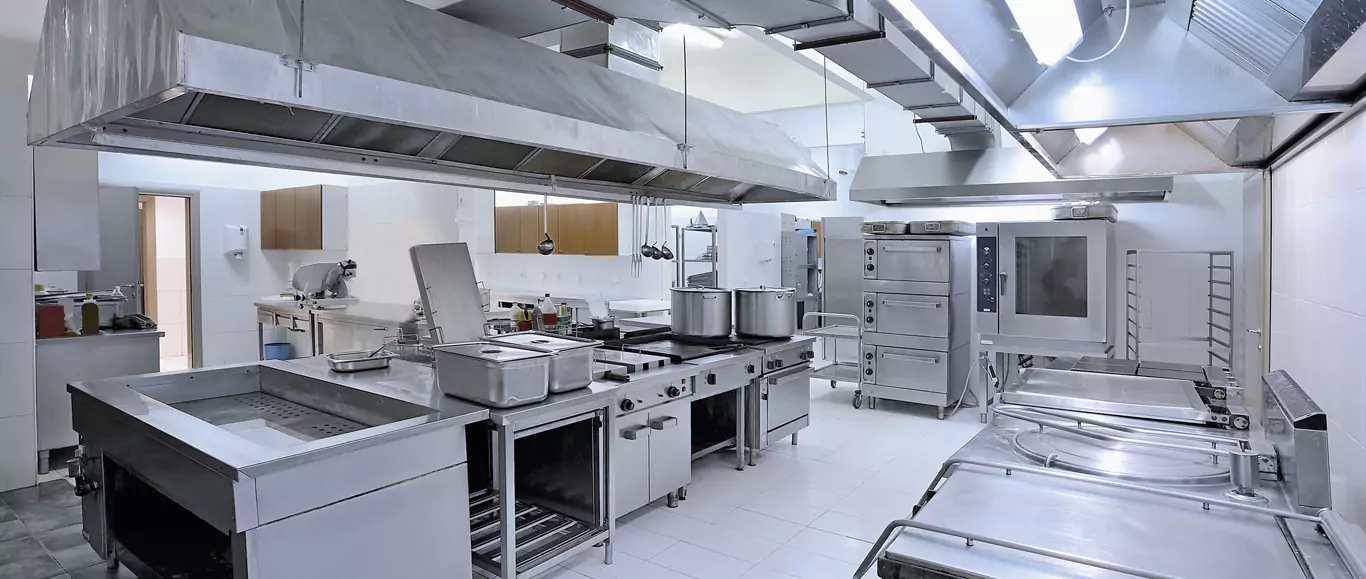As architects, it is essential to understand the importance of designing functional and aesthetically pleasing commercial kitchens. These spaces are the heart of any restaurant or food establishment, where culinary magic happens. Creating a well-designed commercial kitchen requires careful consideration of Commercial Kitchens Equipment: Tips for Architects. In this article, we will explore some valuable tips and insights to help architects create outstanding commercial kitchens that not only meet the functional requirements but also captivate the senses.
- Understanding Workflow and Efficiency
Efficiency is paramount in a commercial kitchen. To maximize productivity, architects should meticulously analyze the workflow and design the space accordingly. Consider the different stations, such as food preparation, cooking, baking, and plating, and ensure smooth transitions between them. By reducing unnecessary steps and optimizing the layout, you can minimize congestion and enhance overall efficiency.
- Prioritizing Safety and Compliance
Commercial kitchens are dynamic environments with potential hazards. Architects must prioritize safety when designing these spaces. Ensure compliance with local health and safety regulations, including proper ventilation, fire suppression systems, and accessibility. Incorporating slip-resistant flooring, adequate lighting, and easy-to-clean surfaces are also crucial for maintaining a safe and hygienic environment.
- Creating a Well-Organized Storage System
Effective storage is vital in commercial kitchens, where ingredients, utensils, and equipment must be easily accessible. Design ample storage space with designated areas for dry goods, refrigerated items, and cookware. Incorporate efficient shelving, racks, and cabinets that optimize space utilization and facilitate organization. A well-organized storage system streamlines operations, reduces clutter, and enhances productivity.
- Emphasizing Ergonomics and Comfort
Considering the physical demands placed on kitchen staff, it is crucial to prioritize ergonomics and comfort in the design. Opt for adjustable countertops and workstations to accommodate individuals of varying heights. Provide ample legroom and comfortable seating areas for breaks. Ergonomic design reduces fatigue, minimizes the risk of injuries, and promotes a more productive and contented workforce.
- Incorporating Cutting-Edge Technology
To stay ahead in the modern culinary landscape, architects should integrate cutting-edge technology into commercial kitchen designs. Explore innovative appliances, smart cooking systems, and energy-efficient equipment. Consider incorporating automation and connectivity features to enhance efficiency and streamline processes. By embracing technology, you can future-proof your designs and provide clients with state-of-the-art kitchens.
- Balancing Functionality with Aesthetics
While functionality is key, aesthetics play a significant role in creating a captivating commercial kitchen. Collaborate with interior designers to strike the right balance between form and function. Choose high-quality materials that are durable, easy to clean, and visually appealing. Integrate cohesive color schemes, textures, and lighting to create a welcoming and inspiring atmosphere that aligns with the brand and vision of the establishment.
- Engaging in Continuous Collaboration
Throughout the design process, architects should maintain open lines of communication and collaborate closely with stakeholders, including chefs, restaurant owners, and kitchen staff. By understanding their specific needs and preferences, architects can tailor the design to suit the unique requirements of the establishment. Regular feedback and collaboration ensure that the final commercial kitchen is a perfect blend of practicality and aesthetics.
Conclusion
Designing functional and aesthetically pleasing commercial kitchens requires a holistic approach that considers efficiency, safety, workflow, and visual appeal. By understanding the unique challenges of these spaces and implementing the tips discussed in this article, architects can create exceptional kitchens that surpass expectations. Remember, a well-designed commercial kitchen not only enhances productivity but also becomes a source of inspiration for culinary excellence.






